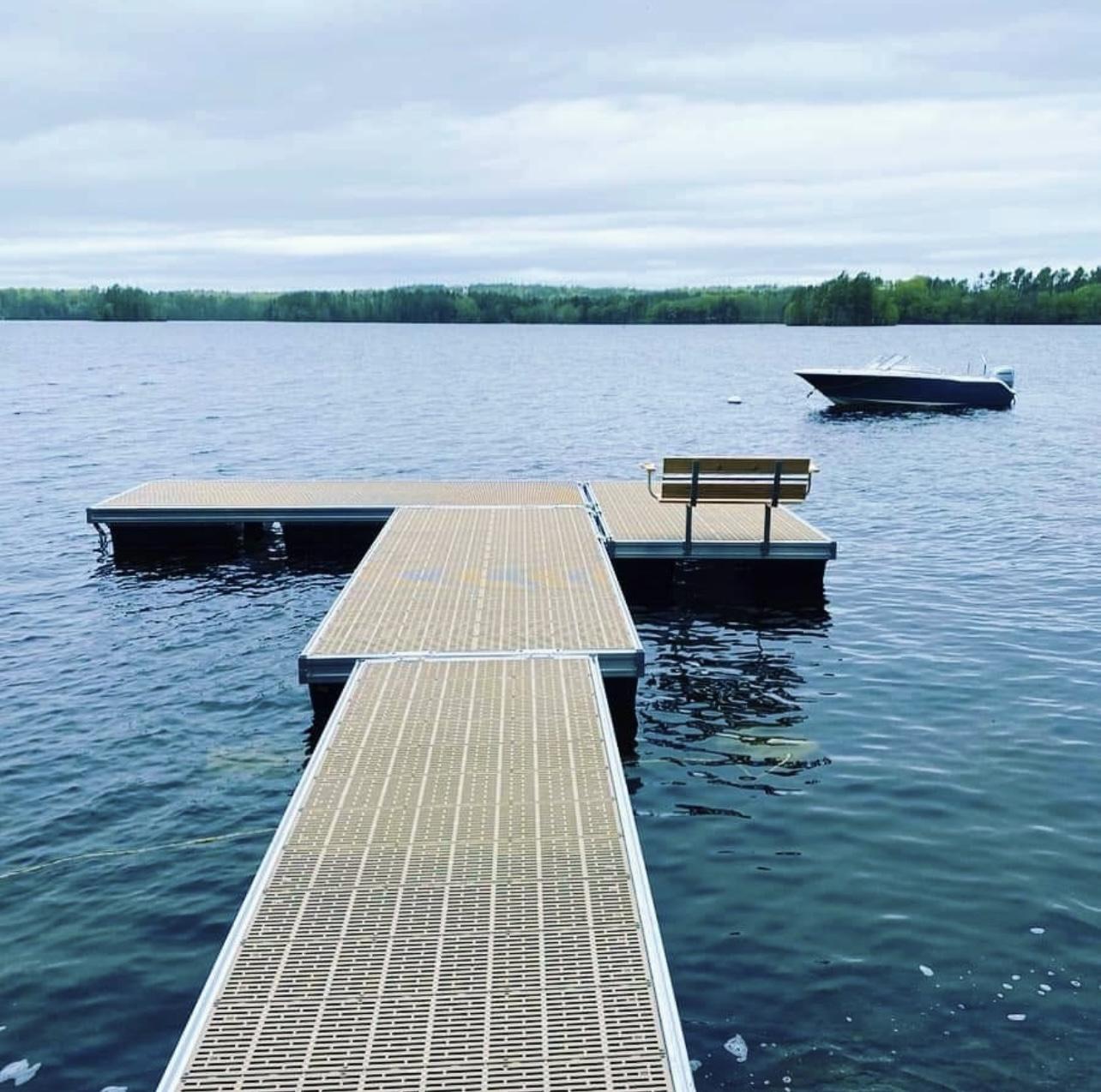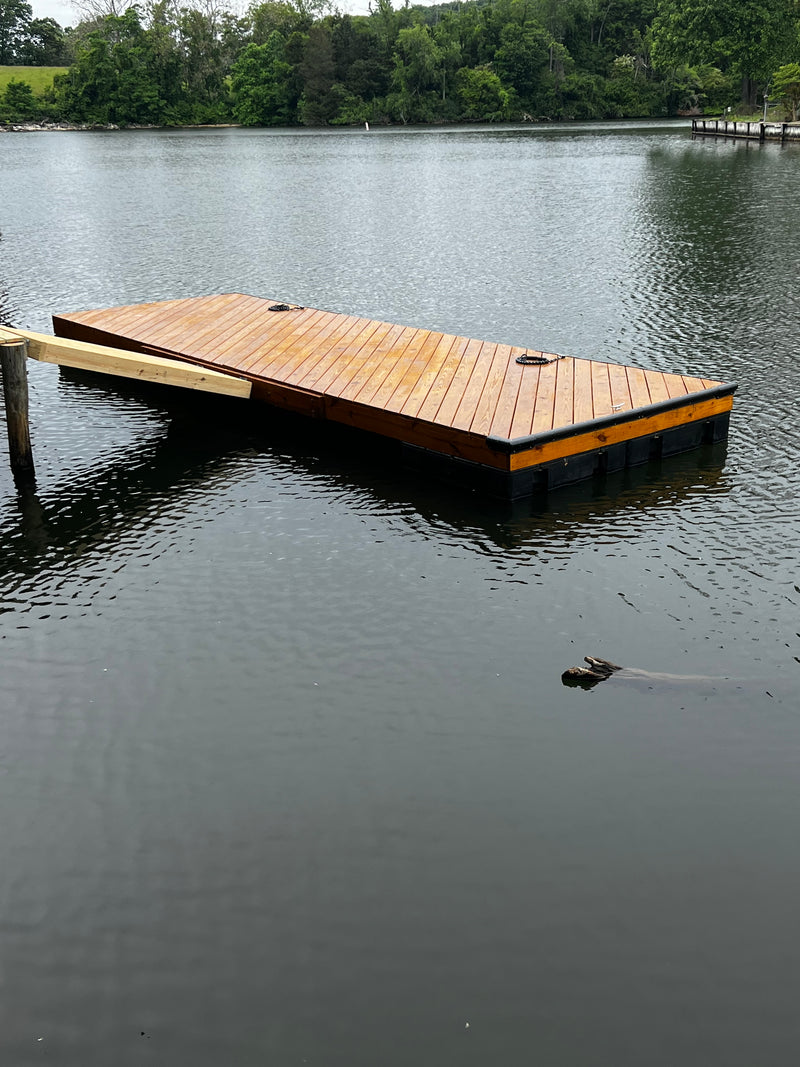Advantages of Working with an Established Floating Dock Company for Comfort
Advantages of Working with an Established Floating Dock Company for Comfort
Blog Article
Create the Perfect Docking Option With Floating Docks
Floating docks existing a versatile remedy for a variety of maritime requirements, adapting perfectly to rising and fall water levels and varied vessel kinds. As we discover the crucial aspects that contribute to the performance of floating docks, several key elements relating to security and maintenance will emerge, elevating inquiries regarding exactly how to enhance your docking experience.

Advantages of Floating Docks
Floating docks deal countless benefits that make them a perfect choice for numerous maritime applications. Unlike dealt with docks, floating docks surge and fall with the tide, ensuring constant ease of access for vessels.
Additionally, floating docks are normally easier and quicker to mount contrasted to conventional fixed frameworks. Their modular style allows for uncomplicated assembly and disassembly, facilitating maintenance and relocation when necessary. This versatility is particularly advantageous for temporary applications or in settings where conditions might alter.
Floating docks also often tend to be more eco-friendly, as they lessen interruption to the seabed and surrounding marine communities. Their buoyant nature minimizes the threat of damages to aquatic life, promoting a much healthier atmosphere. Moreover, these docks can be tailored to fit different vessel dimensions, ensuring that they satisfy specific operational needs - floating dock services.
Inevitably, the combination of adaptability, simplicity of installation, and ecological factors to consider makes floating docks an extremely efficient option for a large range of maritime demands.
Selecting the Right Products
Picking the proper products for floating docks is vital to make sure long life, stability, and sturdiness. The option of products directly impacts the dock's performance in different ecological problems, consisting of exposure to water, sunlight, and possible wear from marine website traffic.
Typical products made use of for floating docks include light weight aluminum, timber, and high-density polyethylene (HDPE) Aluminum is lightweight, corrosion-resistant, and calls for very little upkeep, making it an exceptional choice for long life. Its first expense can be greater contrasted to various other products.
Wood, while aesthetically attractive and giving a standard look, can be susceptible to rot and pest damages if not effectively treated. Utilizing pressure-treated timber or normally long lasting types like cedar or redwood can alleviate these problems.
HDPE is a popular option as a result of its resistance to UV rays and chemicals, in addition to being ecologically pleasant. floating docks. It is available and light-weight in numerous colors, permitting personalization
Ultimately, the right material option will certainly depend upon certain requirements, consisting of budget plan, preferred aesthetic appeals, and ecological considerations. Mindful assessment of these elements will certainly result in a successful and resilient floating dock solution.
Style Considerations for Security
When making floating docks, making sure stability is a basic facet that can considerably affect their capability and safety. Stability in floating dock design is affected by numerous aspects, consisting of buoyancy, weight distribution, and the arrangement of components.
Weight distribution is essential; uniformly dispersing lots across the dock prevents turning and enhances security. Broader styles can use raised security, particularly in harsh water problems, while longer docks may need additional supports to stop sagging.
Another crucial factor to consider is the environmental impact, including wave activity and wind. Including attributes such as sidewalls or skirting can assist alleviate the impacts of ecological pressures, keeping security in unfavorable problems. Eventually, a mix of thoughtful design, product option, and understanding of ecological factors will certainly yield a floating dock that fulfills both stability and safety requirements.
Installation Tips and Strategies

Next, secure the needed permits and abide by local regulations, which may dictate setup methods and ecological factors to consider. Engage a qualified service provider experienced in floating dock installments if needed. Use top quality products created for marine settings to enhance durability and durability.
When positioning the dock, straighten it identical to the shoreline to facilitate easy gain access to. Guarantee that the anchoring system is durable, using concrete blocks or helical supports to maintain the dock versus wind and wave activity. It's important to make up seasonal water level variations, including prospective ice activity in colder environments.
Throughout the installment, verify the dock's floatation and stability before finalizing the anchoring. Regularly evaluate the installation for any kind of indications of wear or damages. By complying with these suggestions and methods, you can achieve a protected, functional, and cosmetically pleasing floating dock setup that satisfies your demands.
Maintenance and Care Guidelines
Keeping and caring for floating docks is critical to lengthening their life expectancy and making certain risk-free use. Routine assessments ought to be use this link carried out to identify any signs of wear, damage, or aquatic growth. Look for cracks, loose fittings, or blemished areas on the dock's surface, as these problems can endanger architectural honesty.
Cleaning up is crucial. Use a stress washer to eliminate algae, barnacles, and particles, which can accumulate with time. For stubborn development, think about environmentally friendly cleansing representatives that won't damage aquatic life.
In addition, examine the mooring lines and anchors regularly to ensure they are safe and secure and complimentary from rust. Replace any frayed or damaged lines quickly to keep stability.
During severe climate, such as storms or freezing conditions, take precautionary measures. Protect the dock with additional mooring lines and, if possible, eliminate any kind of detachable elements to stop damages.
Final Thought
In final thought, other the application of floating docks presents a reliable and functional docking service ideal for numerous maritime applications. Their adaptability to fluctuating water levels, incorporated with a modular design, permits very easy customization and moving. Selecting proper materials enhances both longevity and visual allure, while mindful consideration of security ensures safety and security and durability. With correct installment and regular upkeep, floating docks can give effective and dependable docking experiences for a vast array of vessels.
As we check out the essential aspects that add to the performance of floating docks, a number of key aspects regarding stability and maintenance will emerge, raising questions concerning exactly how to optimize your docking experience. Unlike dealt with docks, floating docks rise and autumn with the trend, guaranteeing regular ease of access for vessels.When developing floating docks, making certain stability is an essential element that can considerably impact their functionality and safety. Security in floating dock style is affected by different aspects, consisting of buoyancy, weight distribution, and the arrangement of elements. Inevitably, a combination of thoughtful layout, product selection, and understanding of environmental aspects will generate a drifting dock that meets both stability and security requirements.
Report this page